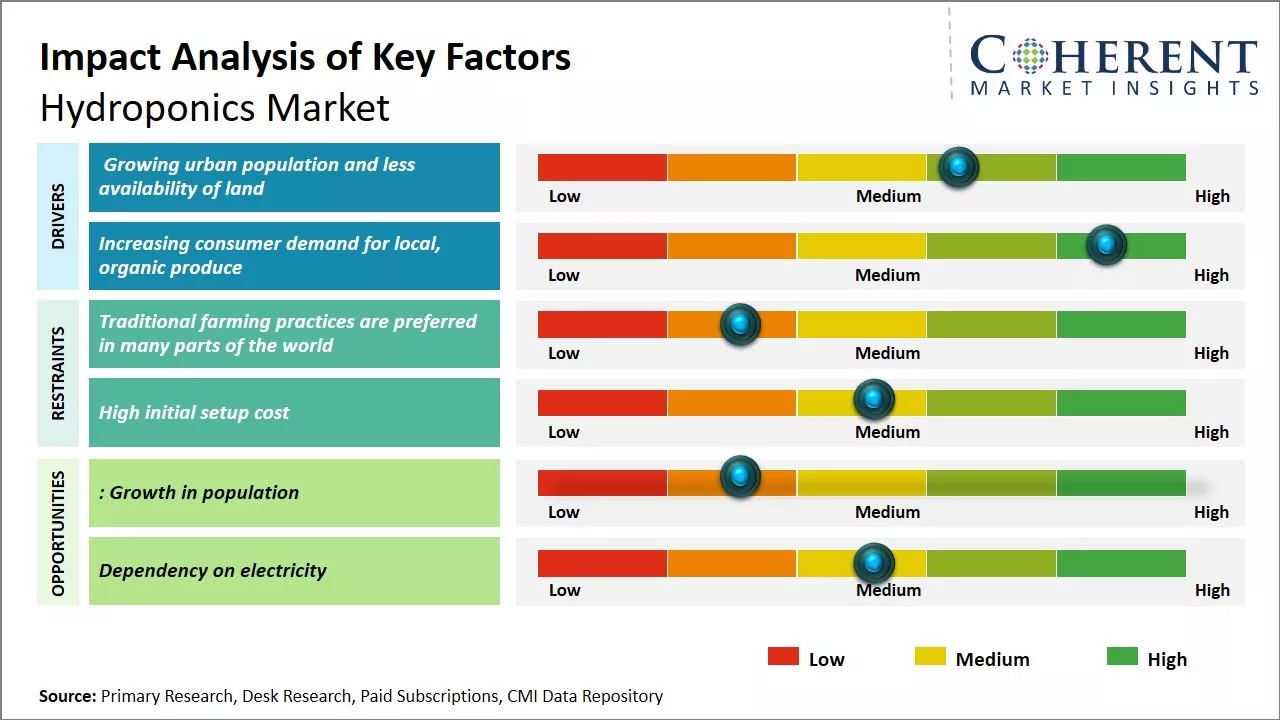The hydroponics market is estimated to be valued at USD 53.21 Bn in 2025 and is expected to reach USD 119.93 Bn by 2032, growing at a compound annual growth rate (CAGR) of 12.3% from 2025 to 2032.

To learn more about this report, Request sample copy
The growing popularity of organic foods and the need for alternative farming practices are expected to drive the hydroponics market during the forecast period. Consumers are increasingly looking for organically grown leafy greens and vegetables due to rising health concerns regarding the chemicals used in traditional farming. Moreover, hydroponic farming provides higher yields while using less water and fertilizers, making it a more sustainable option. With diminished agricultural land and water resources, hydroponics is emerging as a solution to fulfill the growing demand for fresh produce. Further, technological advancements in hydroponics equipment and expanded applications in urban farming is likely to boost the adoption of hydroponic solutions in the coming years.
Growing urban population and less availability of land
With the steady growth in urban population across the globe, major cities are becoming more densely populated than ever. According to United Nations projections, around 68% of the world is expected to live in urban areas by 2050. As cities continue to swell with new residents, the availability of fresh agricultural land near urban centers is shrinking rapidly. Traditional open field farming is no longer a viable option to meet the rising food demand of city dwellers. At the same time, factors like increased land and rental costs also make it tough for farmers to access large tracts of farmland close to cities. Hydroponic farming provides a sustainable solution to overcome these land constraints. It enables crops to be grown indoors in vertically stacked layers or multi-level spaces, utilizing only a fraction of the land needed for conventional agriculture. Hydroponic systems can be easily set up on rooftops, in warehouses or inside shipping containers close to major points of consumption. This significantly reduces transportation and logistics costs, ensures faster delivery of fresh produce to local markets and lowers food wastage. With well-designed hydroponic farms, almost year-round harvesting is possible as the environment can be precisely controlled. The ability to grow crops within urban limits using minimal land and water resources makes hydroponics highly suitable for densely populated urban areas facing land shortage issues.
Joining thousands of companies around the world committed to making the Excellent Business Solutions.
View All Our Clients